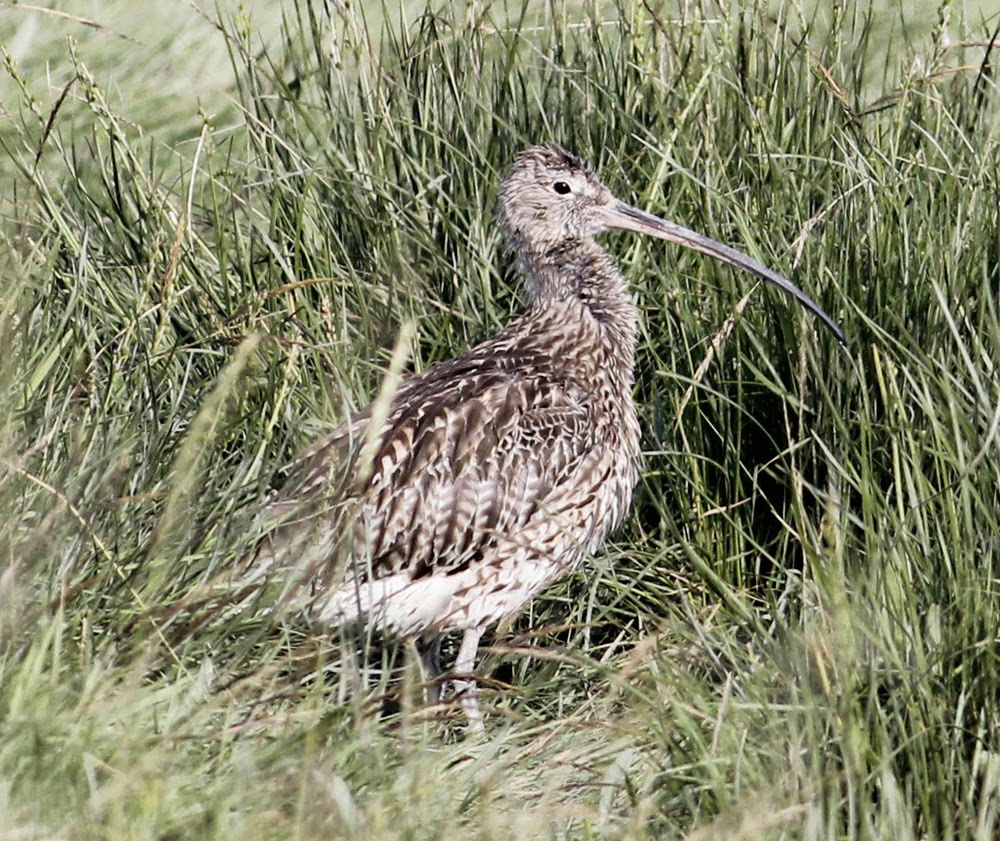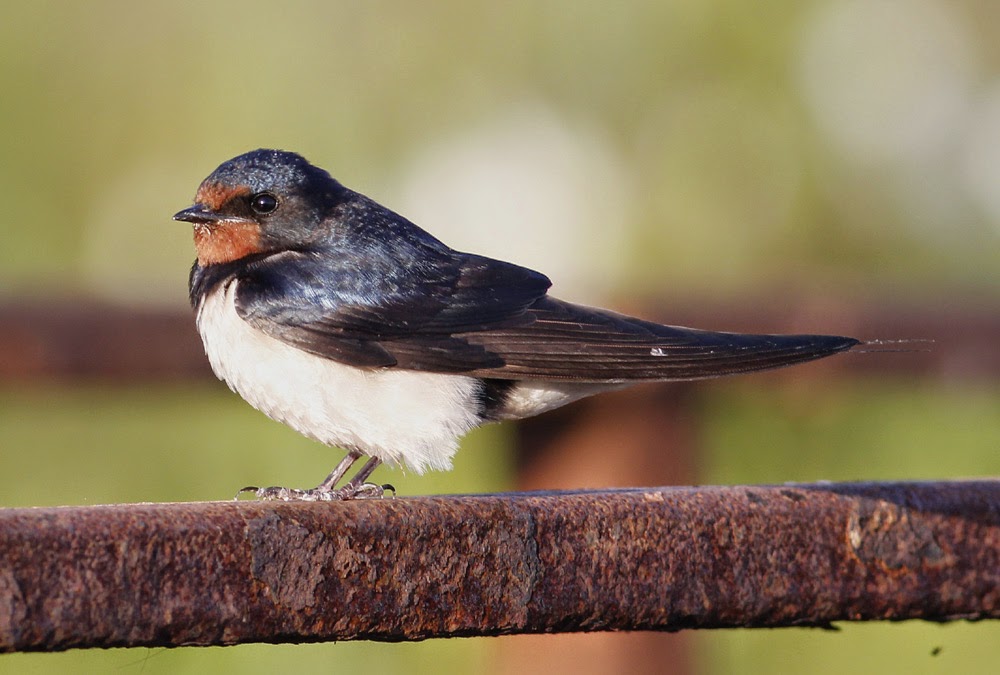Thursday.The early birding at Cockerham, Conder and Glasson had more than a little of a déjà vu feel.
There was no Barn Owl but the early morning Kestrel sat alongside Head Dyke Lane where regular as clockwork it can be found atop one of just a few roadside poles. Birds are such creatures of habit - much like birders really. Needless to say there was a Buzzard at Braides Farm, custodian as usual of the regular fence line which crosses the farm. The Buzzard often faces directly into the early morning sunrise taking the chill off those overnight feathers. That's the sea wall directly behind the Buzzard.
Buzzard
Maybe I was later than usual but there were wagons parked at Conder Green with drivers out of cabs generating noise and disturbance therefore no birds around. I made a quick exit for Glasson Dock where the early light and reflections can often be more spectacular than the birding.
Glasson Dock
There are few Swallows around Glasson Marina this year. Last year many thousands roosted amongst the boats and yachts moored in the marina, this year so far just handfuls of Swallows feeding along with similar numbers of Sand Martins. If anything there appeared to be less Swallows than Swifts with a dozen or more of the latter.
Swallow
One of the adult Common Terns from Conder Green was on its regular fishing circuit; around the yacht basin favouring the south end, up and over the lock gates and then around the dock a couple of times. Then it’s back over the lock followed by a circuit of the basin again, by which time it has usually caught a fish of suitable proportions for the youngsters back home. Later, all three recently fledged but not yet independent youngsters were lined up on the island at Conder Pool waiting for their meal. I can’t say that I have seen either of the adults fishing Conder Pool itself even though there may be suitable prey items as testified by the regular appearance of both Kingfisher and on Thursday the return of a single Little Grebe.
Common Tern
Back at Conder Green and suitably quieter after the wagons and bodies moved on - 5 Little Egret, 7 Common Sandpiper, 4 Meadow Pipit, 5 Pied Wagtail, 3 Greenfinch.
There wasn’t much else doing so I paid a visit to our Sand Martin colony at Cockerham where I’m free to wander around the dairy farm while birding courtesy of Chris the farmer. Roughly 90+ Sand Martins were in evidence with a number of youngsters visible at nest holes as adults returned with food. The next visit for ringing purposes is due in early August, a visit scheduled to fit BTO recommendations for ringing at Sand Martin colonies.
Sand Martin
On Friday Jamie at Knott End promised me a Dover Sole fresh from the Wyre Estuary so I left him skinning the fish and went for a walk up river where the tide was surging up the channel.
Wyre Estuary - Fleetwood (left) Knott End (right)
The Wyre Rose - Fleetwood to Knott End Ferry
There was a Grey Heron along the tideline with many Oystercatchers flying to their roost upriver. In the car park a pair of Pied Wagtails collected food and then flew with beaks crammed full before dropping to the rocks below and out of sight. So that’s where they nest.
Pied Wagtail
As I walked up river I’d counted 300+ Oystercatchers when a couple of them broke ranks to see off a Peregrine which floated above me. But too late, my camera was bagged and an elementary mistake.
Upriver and then alongside the golf course I noted a Kestrel, a couple each of Goldfinch and Linnet plus a wheezing Greenfinch.
All this fresh air sure gives a birder a healthy appetite. Grilled Sole for supper - count me in.
Dover Sole
There's more fishy tales soon from Another Bird Blog.
Linking today to Anni's Blog and Eileen's Saturday Blog.
Linking today to Anni's Blog and Eileen's Saturday Blog.






















































































